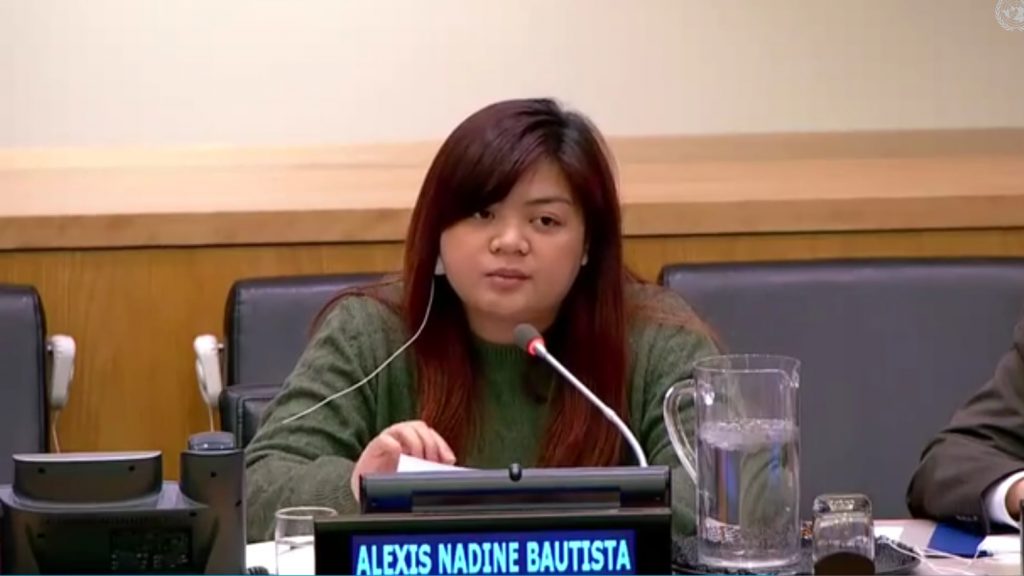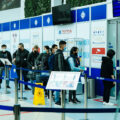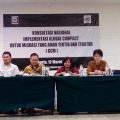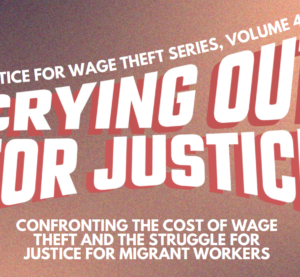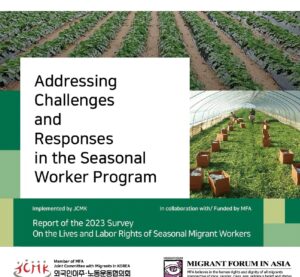MFA Statement 2019 International Dialogue on Migration (IDM)
— March 11, 2019The 2019 International Dialogue on Migration (IDM) was held on 28 February 2019 in New York, United States of America. The 2019 IDM aims to generate informative discussions that governments and other partners can employ in designing appropriate policies to manage youth migration and youth engagement in sustainable development strategies especially as countries are assessing progress towards several of the Sustainable Development Goals (SDGs) relevant to migrants and migration in July 2019 at the United Nations’ (UN) high-level political forum (HLPF) on sustainable development. The results and recommendations from IDM will be captured in the IDM Red Book which will be shared broadly.
Migrant Forum in Asia (MFA) was invited to speak in the second Panel: Addressing specific challenges and vulnerabilities of young people: what role, which partners? Please find below the full statement of MFA.
International Dialogue on Migration
Alexis Bautista, Migrant Forum in Asia
Thank you, moderator, for those questions. Thank you also to IOM for this opportunity for me to try to share the best of my knowledge and experience on this. I’ll give you a short answer that I think encompasses most of the questions given in the agenda for this panel, and I’ll explain more in detail as we go. In all of this, I think it boils down to the willingness to change of mindset and changing the culture or the way things are being done, which people may have been doing for quite some time. Although, there are different factors as to why we are where we are right now.
Let me start with the title of this session, “addressing specific challenges of young people: what role, which partners?”, and a couple of questions like “what mechanism exist or should exist to prevent and assist youth migrants in vulnerable situations”, and “Are there any specific steps that can be taken to reduce the vulnerability of young female migrants?”
Even the way those were structured is already mind-boggling to me, likewise for the other questions. I remember in one of the regional consultations we had in Asia on the GCM which had a similar scenario but that was on women. You see, you shouldn’t or you’re not supposed to take the women away from situations that make them vulnerable. Rather, you should take away whatever danger there is or whatever makes a situation vulnerable to women. Likewise with the youth and young migrants, especially migrant women. The mechanisms and perhaps structure that should exist are for to prevent the situations that make them vulnerable, and mechanisms if they are already in that situation. If you go with the way of limiting a young person’s ability and capacity as well as the fundamental rights, if there are such restrictive policies, would you be putting in place a mechanism that that goes against the principle of non-discrimination, article 2 of the Universal Declaration on Human Rights (UDHR),and specifically target 16b of the 2030 Agenda for Sustainable Development which both talks about non-discrimination?
In connection to that is how the youth including young women are being engaged now in the whole migration governance. Hearing their voices is different from listening to them, and understanding why we need to be engaged, and involved in not just implementation but also in the design of policy developments. We need to have that process of trust-building and confidence-building. It’s a two-way kind of thing in which yes, okay, we listen to what governments say, what UN agencies, and other stakeholders on what they think should be done and what they are doing, as well as ask for accountability on their actions and in-actions.
But as youth, who are already and continue to be directly affected by all the policy developments, we have our say on what is actually happening, our say on what we think can be done and what we think can work, more so that most likely, we are the ones who talk to the rest of the youth on a daily basis, especially now with the power of technology, social media, messaging apps, and whatnot. As part of civil society, we use this a lot to communicate whether for making information available, for capacity building, for direct services especially in crisis situations, but also exchanging information on what is happening, our thoughts and ideas to change the situations we are going through, taking action, and letting each other know if such action works, can be done better, or if it doesn’t work at all.
So to answer the questions on “What role should each stakeholder take in remedying the identified specific challenges and vulnerabilities of young people? What role can each stakeholder take in preventing discrimination against young migrants? How can relevant stakeholders – governments of countries of destination and origin, civil society and international organizations – increase their understanding of young migrants’ challenges and vulnerabilities and improve their response and targeted funding?”
That, I think, would depend again on the mindset of such relevant stakeholders—including civil society and private sector—on how they think the youth and young women in general should be engaged. That would depend on how much they are willing to understand the young migrants’ challenges, how much they are willing to change the structure, the system, the policies, and the practice that create such vulnerable situations and discrimination. Once that is there, all these other questions such as “what specific steps are needed, what comprehensive set of actions are needed”, then you wouldn’t need to have to ask that to me here.
In terms of the reasons why people move, let me take you to a perspective of a prospective female migrant domestic worker. And I’m speaking about this because half of migrant workers are women and most of them are in their early 20s. But I think their situation is more or less similar to other regions and I’ll take it more on the human aspect. A lot of them want to move in search for better opportunities, whether to help their families or help themselves, could be to satisfy that curiosity of being in a different environment, but it could also be because there might be literally nothing for them and I’m speaking on the context of climate changed and displaced migrants.
—
To answer the questions on recommendations and strategies to respond to the challenges of young migrants, again, it has a lot to do with changing the way things are and how we do things, perhaps changing the culture. In doing that, you would need to have the engagement of every stakeholder, actor, partners—governments including local authorities, UN agencies, private sector, and civil society. We see it all over the news, and I for one can say that there is so much more happening to young migrants in different regions, that need to be brought more attention to. And I’d like to go back to what H.E. Shahidul Haque said yesterday at the high-level debate on how there is the darker side of migration, and there is the lighter side of it. With the things that have been happening and continue to happen—let’s acknowledge that it’s not a rosy picture. A lot of us tend to look more on or stay on the darker side that we lose sight of the possibility and the potential to make things better. And we don’t have to be so stuck in being overwhelmed with how much more we need to do. We can start with little things and with it, it can create a ripple effect on changing how things are. We could even start with changing the way we ask questions and naming the panel sessions.
Some examples are how our MFA network in Republic of Korea and Taiwan work with children and youth. They work at the local level on the well-being of the young migrants and their social inclusion while encouraging the importance of cultural diversity. Hand in hand is working on local policies that ensure inclusion of young migrants. We have our members in the Philippines and Japan working with multi-cultural families that include migrant children whether it’s unification, reunification, as well as access to education. In Malaysia and Thailand, there is work being done on and with stateless children. In countries of origin such as Nepal, Philippines, and Bangladesh children and youth left behind.
As a network, we have been engaged in regional consultative processes that tackle labour migration issues such as domestic work, where it’s one of the highest population of young female migrant workers. We continue to work on and find ways to strengthen our work on the social costs of migration, majority of which is on labour migration.
A PDF copy of the statement can be downloaded below.
For more information please contact William Gois of the MFA Secretariat at: mfa@mfasia.org

